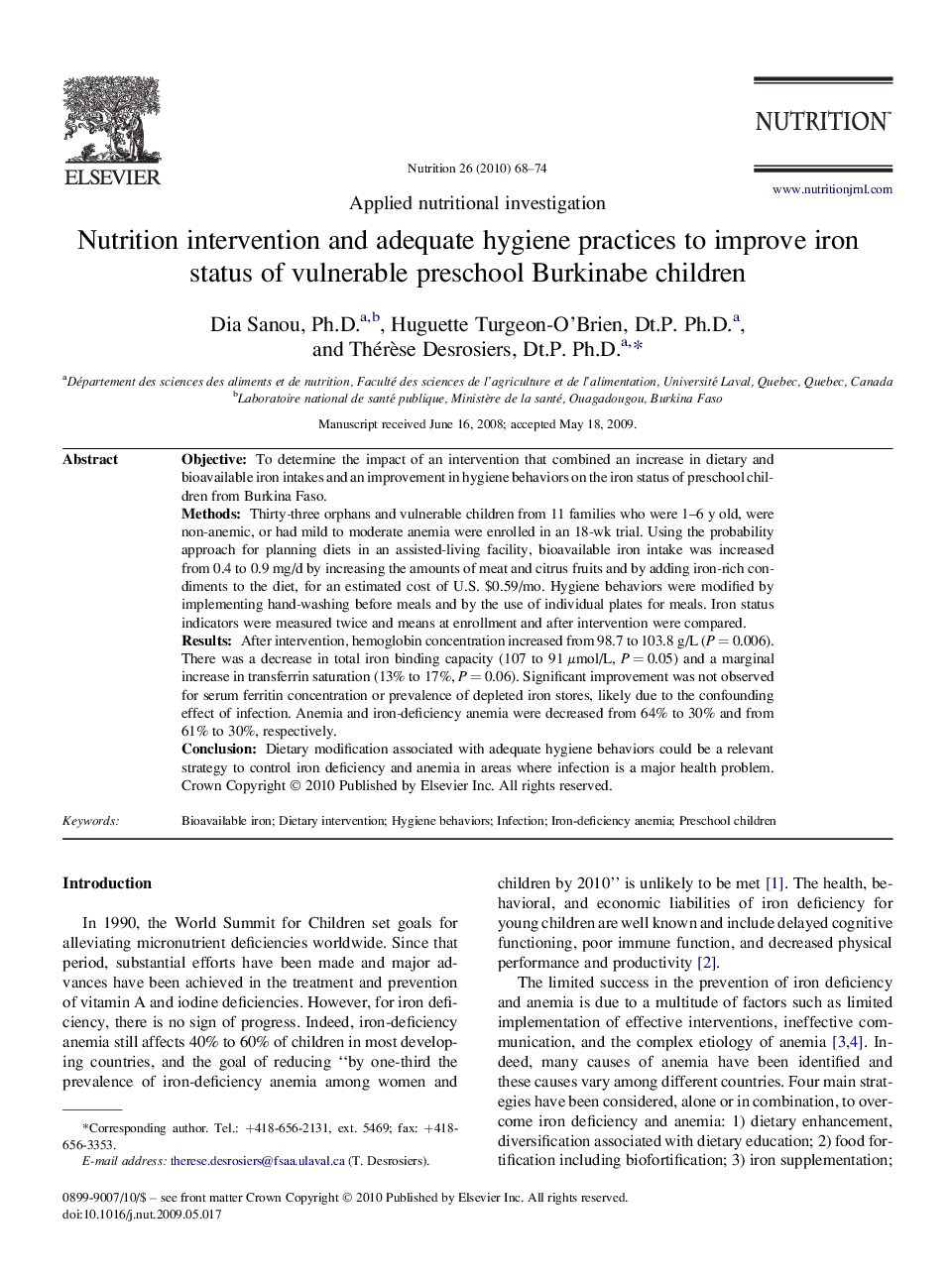| Article ID | Journal | Published Year | Pages | File Type |
|---|---|---|---|---|
| 3276880 | Nutrition | 2010 | 7 Pages |
ObjectiveTo determine the impact of an intervention that combined an increase in dietary and bioavailable iron intakes and an improvement in hygiene behaviors on the iron status of preschool children from Burkina Faso.MethodsThirty-three orphans and vulnerable children from 11 families who were 1–6 y old, were non-anemic, or had mild to moderate anemia were enrolled in an 18-wk trial. Using the probability approach for planning diets in an assisted-living facility, bioavailable iron intake was increased from 0.4 to 0.9 mg/d by increasing the amounts of meat and citrus fruits and by adding iron-rich condiments to the diet, for an estimated cost of U.S. $0.59/mo. Hygiene behaviors were modified by implementing hand-washing before meals and by the use of individual plates for meals. Iron status indicators were measured twice and means at enrollment and after intervention were compared.ResultsAfter intervention, hemoglobin concentration increased from 98.7 to 103.8 g/L (P = 0.006). There was a decrease in total iron binding capacity (107 to 91 μmol/L, P = 0.05) and a marginal increase in transferrin saturation (13% to 17%, P = 0.06). Significant improvement was not observed for serum ferritin concentration or prevalence of depleted iron stores, likely due to the confounding effect of infection. Anemia and iron-deficiency anemia were decreased from 64% to 30% and from 61% to 30%, respectively.ConclusionDietary modification associated with adequate hygiene behaviors could be a relevant strategy to control iron deficiency and anemia in areas where infection is a major health problem.
